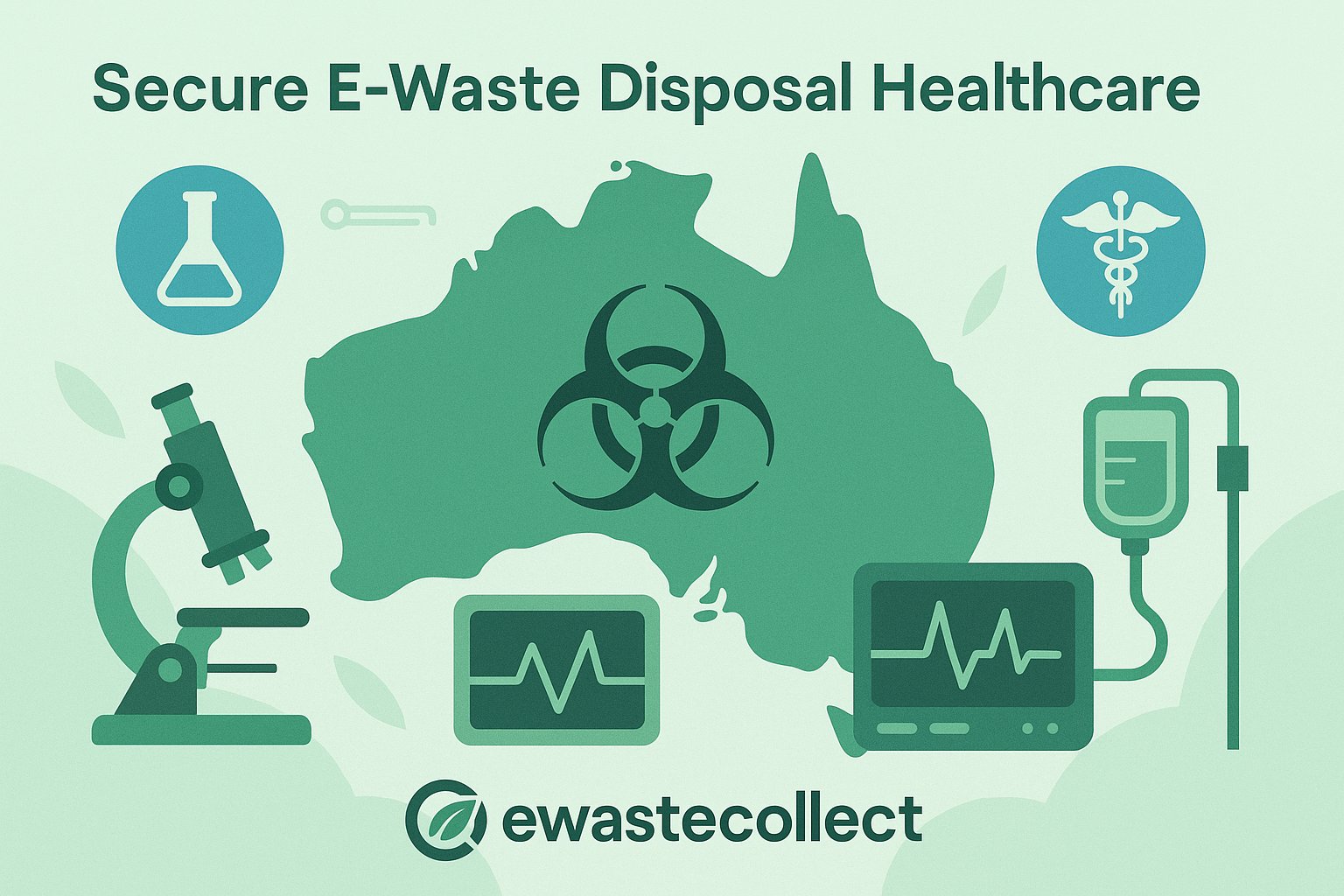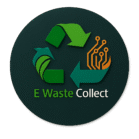Contents
ToggleThe Ultimate 2024 Guide to Legally Disposing Medical Equipment in Australia
For healthcare providers in Australia, ensuring secure e-waste disposal healthcare equipment is a critical, yet often underestimated, aspect of lifecycle management. This isn't merely about throwing things away; it's an intricate process governed by stringent federal, state, and territory regulations designed to protect public health, safeguard the environment, and ensure data privacy. Understanding these regulations is non-negotiable from the outset to avoid substantial financial penalties, irreparable reputational damage, and significant environmental and health risks. This comprehensive guide will illuminate the path to proper and secure e-waste disposal healthcare solutions in the dynamic landscape of Australian healthcare.

Understanding the Imperative: Why Medical Equipment Disposal Demands Rigor, Especially for Secure E-Waste Disposal Healthcare Assets
The vast array of medical equipment, ranging from simple consumables to highly complex diagnostic and therapeutic machines, necessitates a nuanced approach to disposal. Each piece of equipment, depending on its function, material composition, and use history, can fall into one or more critical waste categories. Understanding these distinctions is crucial for effective secure e-waste disposal healthcare practices. Healthcare facilities must prioritize proper disposal to avoid risks.
- Clinical Waste (or Biohazardous Waste): This includes any equipment or material that has come into contact with blood, bodily fluids, human tissue, or infectious agents, posing a risk of infection.
- e-Waste (Electronic Waste): Modern medical electronics contain circuit boards, batteries, heavy metals, and persistent organic pollutants. Proper secure e-waste disposal healthcare prevents contamination of ecosystems.
- Hazardous Waste: Items with chemicals or radioactive isotopes (e.g., from imaging or therapeutic equipment) must follow strict disposal protocols.
- General Waste: Non-hazardous, non-electronic items that still must be handled within local guidelines.
The repercussions of non-compliance are severe. Legal fines, privacy violations, and environmental damage are common consequences. Proper handling of secure e-waste disposal healthcare assets and data isn't optional — it's a critical responsibility.
The Regulatory Landscape in 2024: Federal and State Frameworks for Secure E-Waste Disposal Healthcare Compliance
Federal Oversight and Key Legislation (National Directives for Secure E-Waste Disposal Healthcare)
- National Waste Policy Action Plan: Guides Australia’s transition to a circular economy. Encourages recycling and secure e-waste disposal healthcare practices across sectors including medical facilities.
- Environmental Protection and Biodiversity Conservation Act 1999 (EPBC Act): Offers a legal framework for protecting the environment and may apply to hazardous medical waste near ecologically sensitive areas.
- National Environment Protection Measures (NEPMs): The NEPM for the Movement of Controlled Waste ensures interstate transport of hazardous waste is compliant with safety protocols.
- Privacy Act 1988: Requires secure destruction of personal information stored on medical devices. Compliance is critical for secure e-waste disposal healthcare data protocols.
- Hazardous Waste (Regulation of Exports and Imports) Act 1989: Controls cross-border transport of hazardous materials under conventions like the Basel Convention.
State and Territory Regulations (Local Enforcement and Specifics for Secure E-Waste Disposal Healthcare)
Each Australian state and territory has its own environmental laws and agencies (e.g., EPA Victoria, NSW EPA, QLD DES, SA EPA). These agencies enforce licensing, transport, treatment, and classification rules tailored to their region.
Key areas of regulation include:
- Clinical Waste: Defined by color-coded bins, sharps containers, and incineration requirements.
- Hazardous Waste: Includes toxic chemicals, radioactive material, and must follow strict EPA tracking.
- Licensing: Facilities must be licensed to generate, store, transport or process waste.
- E-waste: Includes medical electronics. Guidelines ensure secure e-waste disposal healthcare handling and recycling.
In 2024, Australian policy is shifting toward a circular economy. Manufacturers are encouraged to design equipment for easier end-of-life recycling, while facilities are urged to participate in strong e-waste programs for secure e-waste disposal healthcare compliance.
The Step-by-Step Process for Legal Medical Equipment Disposal, Including Secure E-Waste Disposal Healthcare Assets
1. Rigorous Classification and Segregation for Optimal Secure E-Waste Disposal Healthcare
Misclassification is a critical risk. You must define and label all outgoing equipment precisely:
- Contamination Assessment: If exposed to fluids or tissue, it's clinical waste.
- Electronic Components: Devices with boards, screens, or cords are e-waste. For contaminated electronics, secure e-waste disposal healthcare is doubly crucial.
- Hazardous Materials Check: Mercury, lead, cadmium, or radioactive substances require specialized handling.
- Reusability: Determine whether refurbishment or resale is an option before disposal.
2. Essential Decontamination and Sanitization Before Any Disposal Activities
Equipment exposed to clinical settings must be cleaned, disinfected, and possibly sterilized per AS/NZS 4187 or state guidelines:
- Physical cleaning to remove visible dirt.
- Chemical disinfection or heat treatment for safety.
- Sterilization for high-risk or reusable units.
Proper decontamination is critical for any next steps in secure e-waste disposal healthcare.
3. Absolute Data Destruction: Protecting Patient Privacy
Many devices store sensitive patient data. You must comply with the Privacy Act 1988:
- Secure Wiping: Use certified software (e.g., NIST 800-88 or DoD 5220.22-M).
- Physical Destruction: Shredding or degaussing for unrecoverable erasure.
- Firmware Data: Embedded memory should not be overlooked.
- Audit Trail: Maintain detailed documentation: serial number, destruction date/method, certificate, and vendor.
Failure in this stage can lead to severe fines and reputational damage. Secure e-waste disposal healthcare = data protection + legal safety.
4. Strategic Choice of Disposal Method
A. Prioritizing Recycling and E-Waste Management through ewastecollect.com
Recycling is the ideal method for non-hazardous electronics. ewastecollect.com offers:
- Certified recyclers with R2 or ISO 14001 credentials.
- Guidance aligned with the National TV & Computer Recycling Scheme (NTCRS).
- Support for future producer responsibility initiatives.
B. Stringent Clinical and Hazardous Waste Disposal
- Clinical Waste: Managed by licensed high-temp incinerators.
- Hazardous Chemical Waste: Requires chemical treatment or tracking.
- Radioactive Waste: Handled per ARPANSA regulations or stored for decay.
Always request a Certificate of Destruction to maintain compliance and traceability.
C. Exploring Asset Recovery and Remarketing (Reuse)
- Refurbish and resell to other facilities or global partners.
- Donate to verified charitable organizations (with proper cleaning & data removal).
- Harvest reusable parts for sustainable practices.
Every reuse path must follow strict secure e-waste disposal healthcare protocols.
Establishing Robust Best Practices for Ongoing Compliance in Secure E-Waste Disposal Healthcare
Effective medical equipment disposal isn't a one-off task; it's an ongoing commitment requiring integrated policies and procedures. This is particularly true for ensuring secure e-waste disposal healthcare assets throughout their lifecycle.
- Comprehensive Asset Management System: Track all equipment from purchase to disposal. Include service records, contamination status, data presence, and disposal method to support your secure e-waste disposal healthcare strategy.
- Strategic Partnerships with Certified Providers: Work only with fully licensed and certified waste companies (e.g., ISO 14001 for environment, ISO 27001 for data security). Audit them if needed. Use ewastecollect.com as a trusted reference point.
-
Impeccable Documentation and Auditing: For every disposed item, record:
- Date of disposal
- Equipment serial number and details
- Classification (e-waste, hazardous, clinical)
- Decontamination method
- Data destruction method + certificate
- Vendor details
- Official disposal certificates
- Continuous Staff Training and Awareness: Train clinical, maintenance, and admin teams regularly. Topics include waste types, data security, and secure e-waste disposal healthcare laws.
- Regular Policy Review: Environmental and privacy regulations change often. Keep your internal protocols up to date with 2024 legislation.
- Sustainability Integration: Reduce waste generation, extend equipment life, and maximize reuse or recycling. These steps help the environment and cut costs. At ewastecollect.com, we emphasize sustainability in all secure e-waste disposal healthcare solutions.
Looking Ahead: The Future of Medical Waste Management in Australia and the Evolution of Secure E-Waste Disposal Healthcare
The trend in Australia, and globally, is toward greater accountability and sustainability in waste management. Future developments are likely to include:
- Extended Producer Responsibility (EPR): Device manufacturers will increasingly be responsible for the entire product lifecycle, including safe end-of-life disposal. This simplifies secure e-waste disposal healthcare and encourages take-back programs.
- Advanced Recycling Technologies: Innovations will allow the recovery of more complex materials and enable safer, more efficient processing of hazardous components. ewastecollect.com actively follows and contributes to this progress.
- Digital Tracking and Reporting: Waste management systems will be digitized, improving traceability from generation to final disposal.
- Circular Economy Focus: Manufacturers and healthcare providers will design and select products with durability, repairability, and recyclability in mind, reinforcing the foundations of secure e-waste disposal healthcare.
Conclusion
The legal and responsible disposal of medical equipment in Australia is a multifaceted challenge, demanding a proactive, informed, and systematic approach. By deeply understanding the 2024 regulations, meticulously classifying equipment, prioritizing robust data destruction, and partnering with certified disposal experts, healthcare organizations can not only ensure strict compliance but also contribute significantly to environmental protection and the safeguarding of public trust.
Navigating these complexities can seem daunting, but with the right processes and partners, your facility can achieve exemplary standards in medical waste management. For all your electronic medical equipment disposal needs, remember that ewastecollect.com is a dedicated resource for finding certified and compliant solutions, ensuring secure e-waste disposal healthcare assets are handled responsibly.
For more insights on e-waste regulations, check out our guide on Australian E-Waste Recycling Schemes.
